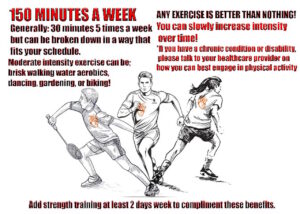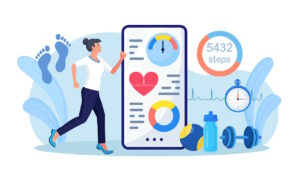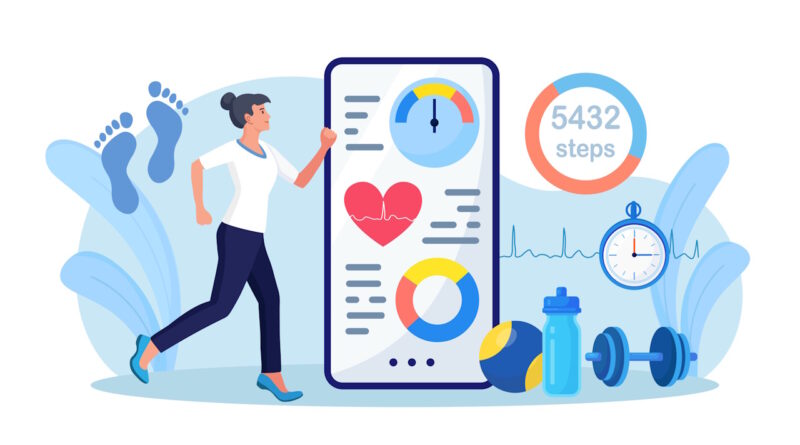Impacts of Exercise on Cardiovascular Disease
HEALTH
by Sameer Jain
The cardiovascular system is a vital part of the human body that consists of the heart and blood vessels. It has the responsibility of keeping all the other organs in your body alive by providing them with oxygen containing blood. When this task is interfered, it can lead to debilitating and life-threatening consequences like heart attack and stroke. The process in which fatty plaques build up on vessel walls and prevent or complicate the job of the cardiovascular system is known as Cardiovascular Disease (CVD) (1). CVD is associated with many risk factors including widespread conditions like high blood pressure and type 2 diabetes. Diabetes is a chronic metabolic disease that results in high blood sugar which damages blood vessels and further increases risk of high blood pressure (2). According to the World Health Organization, CVD is the leading cause of death globally with over 17.9 million lives lost each year (3).
the other organs in your body alive by providing them with oxygen containing blood. When this task is interfered, it can lead to debilitating and life-threatening consequences like heart attack and stroke. The process in which fatty plaques build up on vessel walls and prevent or complicate the job of the cardiovascular system is known as Cardiovascular Disease (CVD) (1). CVD is associated with many risk factors including widespread conditions like high blood pressure and type 2 diabetes. Diabetes is a chronic metabolic disease that results in high blood sugar which damages blood vessels and further increases risk of high blood pressure (2). According to the World Health Organization, CVD is the leading cause of death globally with over 17.9 million lives lost each year (3).
Unfortunately, due to inequity in social determinants of health, we see many health disparities between racial and ethnic groups within the United States. Health disparities can include limited access to healthcare or health insurance, language or cultural barriers to care, and economic instability. These disparities can increase risk for cardiovascular disease and its precursors in the LatinX community (4).
This exemplified in the following statistics collected from recent studies (4).
– 75% of LatinX adults already undergoing treatment still deal with unmanaged hypertension.
– LatinX adults are more likely to develop diabetes than white adults
– LatinX people are twice as likely to have undiagnosed diabetes when compared to white people
– LatinX adults are more likely than white adults to experience heart failure
– Mexican American adults are more likely to have stroke when compared to white adults

These statistics highlight the importance of monitoring heart health for LatinX communities. Exercise and physical activity, along with smoking cessation and a healthy diet, is one of the best ways you can prevent against cardiovascular disease. By helping manage sugar, fat, and pressure levels in your blood, physical activity helps protect your heart and blood vessels. Aerobic activity, otherwise known as “cardio”, is exercise that increases your heart rate and induces the benefits mentioned earlier (2).
Exercise recommendations to help stay on top of your cardiovascular health can be seen in the following graphic (5).
Physical activity not only helps you feel, think, and sleep better but also protects you against conditions like cardiovascular disease. By getting at least 150 minutes of moderate intensity physical activity per week you can help your heart and blood vessels stay healthy and live longer in the process.
The illustration for this article was created by Carlos Alberto Villamarin.
References:
(1) https://www.ncbi.nlm.nih.gov/books/NBK535419/
(2) https://www.ncbi.nlm.nih.gov/pmc/articles/PMC6481017/
(3) https://www.who.int/health-topics/cardiovascular-diseases#tab=tab_1
(4) https://my.clevelandclinic.org/health/articles/23051-ethnicity-and-heart-disease
(5) https://www.heart.org/en/healthy-living/fitness/fitness-basics/aha-recs-for-physical-activity-in-adults
Sameer Jain is from Austin, Texas and is a 2nd year medical student at the University of Rochester School of Medicine and Dentistry. He is currently part of the university’s “LatinX Health Pathway”. His experiences from growing up in Texas and being in the LatinX Health Pathway have helped him develop a passion for providing medical care to the Spanish speaking community. Sameer also has an interest in device development and its applications to the moving body. With this, he hopes to pursue a career in orthopedic medicine.

